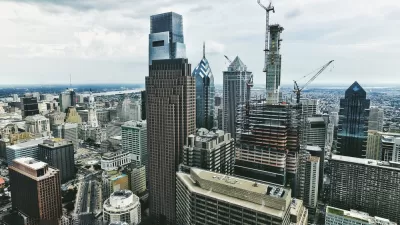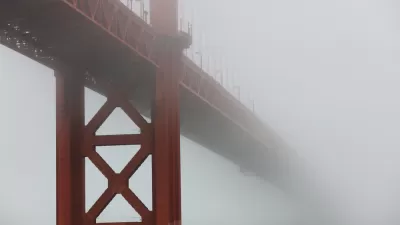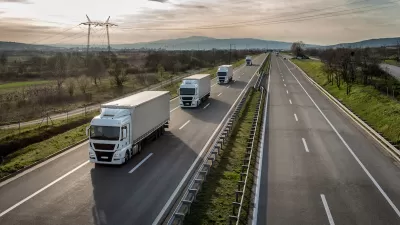The federal government has an opportunity to make a generational investment in the country's infrastructure that could fundamentally shift the way we live and move around cities.

Thomas Day describes how, with a clear vision, the Infrastructure Investment and Jobs Act (IIJA) could be an opportunity to invest in large-scale projects that shift development toward "hyperdense," transit-oriented cities. But while Robert Moses-style redevelopment on a large scale may no longer be possible, experts like Vishaan Chakrabarti, architect and professor at the University of California, Berkeley, argue that leaving too much power in the hands of competing local interests would squander a "generational opportunity" to redesign urban landscapes with a broad, unified vision.
According to Chakrabarti, the 1956 Federal Highway Act kindled a reassessment of how Americans live—a reassessment that could happen again with a similarly massive and directed infrastructure investment.
Ongoing debates over freeway removal or expansion proposals and rail projects indicate that policymakers and the public remain divided on what the future of transportation should be. But Chakrabarti believes that policymakers should move to aggressively encourage high-density development that would both ease the housing crisis and reduce carbon emissions and energy use.
Day suggests that in order to facilitate quicker and more assertive development of high-density, transit-oriented infrastructure projects, federal agencies should direct funding to projects that meet their goals and empower regional agencies to make decisions that balance local concerns and opposition with regional benefits.
FULL STORY: The Opportunity to Create the Hyperdense Cities We Need

Trump Administration Could Effectively End Housing Voucher Program
Federal officials are eyeing major cuts to the Section 8 program that helps millions of low-income households pay rent.

Planetizen Federal Action Tracker
A weekly monitor of how Trump’s orders and actions are impacting planners and planning in America.

Ken Jennings Launches Transit Web Series
The Jeopardy champ wants you to ride public transit.

Rebuilding Smarter: How LA County Is Guiding Fire-Ravaged Communities Toward Resilience
Los Angeles County is leading a coordinated effort to help fire-impacted communities rebuild with resilience by providing recovery resources, promoting fire-wise design, and aligning reconstruction with broader sustainability and climate goals.

When Borders Blur: Regional Collaboration in Action
As regional challenges outgrow city boundaries, “When Borders Blur” explores how cross-jurisdictional collaboration can drive smarter, more resilient urban planning, sharing real-world lessons from thriving partnerships across North America.

Philadelphia Is Expanding its Network of Roundabouts
Roundabouts are widely shown to decrease traffic speed, reduce congestion, and improve efficiency.
Urban Design for Planners 1: Software Tools
This six-course series explores essential urban design concepts using open source software and equips planners with the tools they need to participate fully in the urban design process.
Planning for Universal Design
Learn the tools for implementing Universal Design in planning regulations.
Ada County Highway District
Clanton & Associates, Inc.
Jessamine County Fiscal Court
Institute for Housing and Urban Development Studies (IHS)
City of Grandview
Harvard GSD Executive Education
Toledo-Lucas County Plan Commissions
Salt Lake City
NYU Wagner Graduate School of Public Service





























